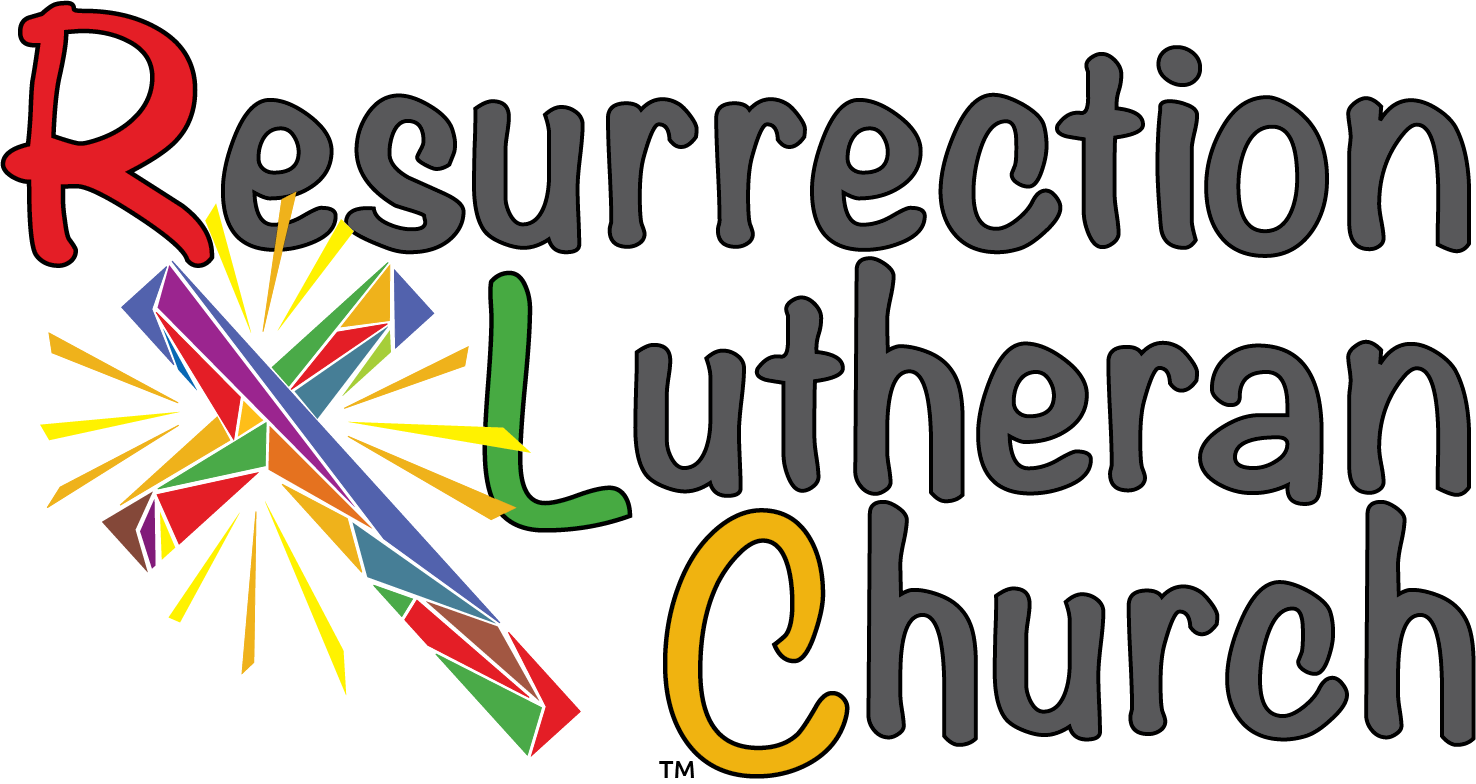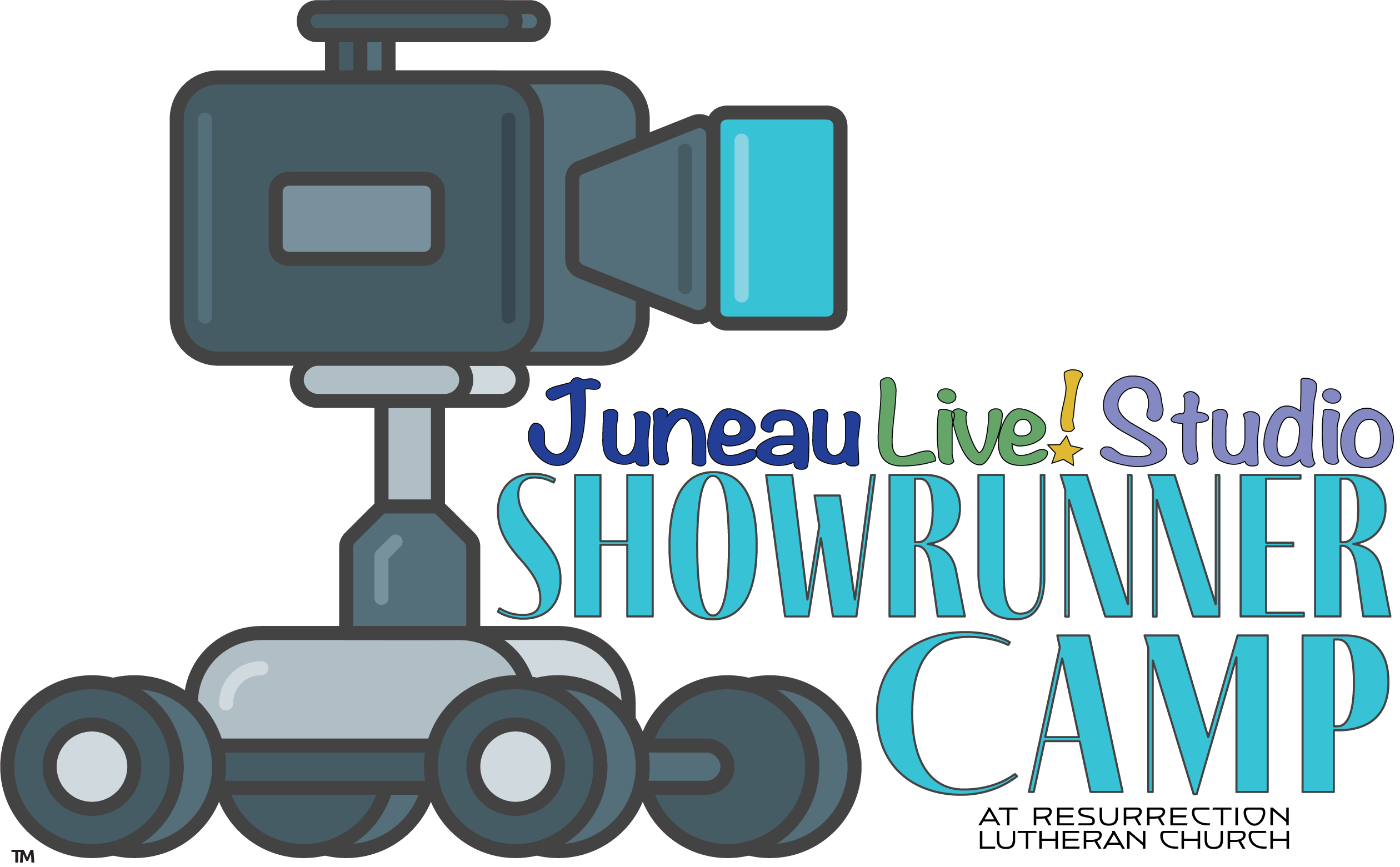Curriculum – What do I learn?
Welcome, Introduction to Television Production, the Juneau Live! Studio, Daily Course Broadcasts, Story-boarding, ENG
Welcome to “Introduction to Television Production” at the Juneau Live! Studio, featuring our Daily Course Broadcasts and an immersive experience in storyboarding and ENG (Electronic News Gathering). Your guides through this exciting journey will be April Dooley, Tamara Walter, Brad Perkins, and a team of dedicated Group Advisors.
As you embark on this adventure, prepare for an engaging overview of what the week has in store for you. We’ll kick off with a comprehensive introduction to TV production terminology, followed by an in-depth studio tour. Our aim is to equip each group with the essential skills needed to produce compelling live Showrunner Course broadcasts at 3:30 pm daily. From pre-production planning to the art of storyboarding, we’ve got you covered.
In addition, you’ll get hands-on experience with the studio’s cutting-edge ENG and Steadicam equipment. This technology enables the creation of both remote prerecorded content and live remote broadcasts, offering a versatile toolkit for your daily projects. Plus, there will be ample opportunity for each group to collaborate closely with their advisor, fine-tuning their unique broadcast for the day. This 2 hour segment is led by course director Brad Perkins and the rest of course staff.
Producing and Showrunning
Led by Brad Perkins and Tamara Walter, this 1/2 hour segment delves into the multifaceted roles within the entertainment realm, focusing on television production in comparison to film. As a television producer, you’ll explore the oversight and coordination of various facets of production, including financial, legal, administrative, technological, and artistic elements. Additionally, the course highlights the pivotal role of the Showrunner, the visionary force with overarching creative authority and management responsibilities for a television program. Unlike freelance or staff writers, the showrunner crafts the show’s unified vision.
Television Directing
Guided by Paul McDermott and Jared Coursebell, this course offers an in-depth exploration into the unique role of a television director, distinguishing it from film directing. In television, the director primarily operates from the gallery or control room, shaping the creative vision of the production by selecting camera shots in real-time. This process involves monitoring the action from a series of screens, each linked to different cameras, and communicating directions to the floor manager and gallery staff for sound cues, digital graphics, and video playback.
Additionally, the course covers the responsibilities of video control operators, who manage the visual quality of the broadcast, ensuring proper contrast, framing, color balance, and overall fidelity. These operators play a crucial role in both live and recorded telecasts, adjusting technical settings to maintain broadcast standards.
We will also delve into the roles of video tape operators in television productions that utilize video tape, focusing on their tasks in cueing, recording, and playback of video inserts. Their expertise is vital in sports programming, news, and other videotaped productions, including managing action replays and editing highlights on the fly.
Spanning 1 Hour, this comprehensive overview will not only highlight the director’s creative leadership but also the collaborative effort required in the control room to bring television productions to life.
Sound Engineering, A1, A2 and Boom Operation
Join Keith Giles from Alaska Music One and Bradley Perkins in a comprehensive exploration of sound engineering in production, covering the critical roles of A1, A2, and Boom Operation.
The A1, or primary audio engineer, takes the lead in the technical realm, handling the design and operation of the sound system. This includes managing mixers, microphones, intercoms, in-ear monitors (IFB), radio frequency (RF) equipment, public address (PA) systems, music and sound effects playback, and multi-track recording. The A1’s responsibilities extend through the build, rehearsal, and show phases, overseeing the audio student and ensuring all sound sources are expertly routed, recorded, and mixed for broadcast.
The A2, or audio assistant, plays a pivotal role in logistics, ensuring microphones and other audio devices are correctly positioned and connected. Working from the production truck to the venue, the A2 may operate solo or as part of a larger team, depending on the scale of the production.
The Boom Operator, an essential member of the sound student, specializes in microphone placement. Whether employing a fishpole with an attached microphone or a fisher boom for greater precision and control, the boom operator works diligently to capture dialogue and ambient sounds without the equipment appearing on camera. This role requires close collaboration with the production sound mixer to record all sound elements clearly during filming.
This session, spanning 2 hours, offers an in-depth look at the technical and practical aspects of sound engineering, providing participants with a solid foundation in the field.
Floor Direction and Camera Operation
Led by Adam Garner, David Brabaw, and Karen Lawfer, this module delves into the intricacies of camera operation and floor direction, pivotal roles in television and film production.
The camera operator stands as a key figure behind the camera, responsible for capturing the action within the frame as directed by the Director. This role demands a keen instinct to follow the action seamlessly and, when also serving as a cinematographer, to influence the visual theme and appearance of the production. The cinematographer, or Director of Photography (DP), plays a crucial role in setting the visual tone through lighting, shot framing, lens selection, and film stock choice, aligning each decision with the director’s vision. Despite their significant impact on a project’s aesthetics, the cinematographer typically does not handle the camera’s physical movement, leaving this task to the dedicated camera operator.
The floor manager acts as the director’s extension on the studio floor, orchestrating the student, cast, and guests to ensure the production remains on schedule. Similar to an assistant director, the floor manager utilizes direct communication with the director via talkback to maintain a clear and safe performance space, manage set readiness, control lighting, and enforce discipline among staff and audience. The role encompasses a variety of tasks including cueing, prompting, and providing critical timing information to on-screen talent.
Supporting the floor manager is the Assistant Floor Manager (AFM), who coordinates the studio floor, ensuring script compliance among contributors, and managing props and set adjustments. This role is essential for the smooth execution of production tasks, allowing the floor manager to focus on higher-level coordination and communication.
Spanning 1 Hour, this session offers participants a comprehensive understanding of the dynamic roles of camera operation and floor direction, highlighting the collaboration and expertise required to bring a production to life.
Stage Managing, Gripping and Gaffing
This comprehensive module, presented by April Dooley, David Brabaw, and Tamara Walter, offers an in-depth look into the pivotal roles of stage managing, gripping, and gaffing in theatrical and film productions.
Stage managers are the organizational backbone of theatrical productions, facilitating seamless communication and coordination between the director, backstage student, actors, and production management. This role is crucial in orchestrating the complex interplay of various elements of stagecraft to ensure a coherent and smooth-running production.
The gaffer, or chief lighting technician, plays a vital role in shaping the visual aesthetic of a production under the guidance of the Cinematographer or Lighting Director. In television, the role may be referred to as the Chief Lighting Director. The gaffer, supported by an assistant known as the best boy, is responsible for executing the lighting plan, ensuring that the stage or set is lit to match the director of photography’s vision.
Grips, led by a key grip, are instrumental in both the lighting and camera departments. Their dual role involves supporting the camera student with camera movement and setups, such as dollies and cranes, and collaborating with the electrical department to achieve the desired lighting effects under the direction of the director of photography. The grip team’s expertise enables them to manipulate shadows and light, contributing significantly to the visual storytelling of a production.
In this session, spanning 1 Hour, participants will gain a thorough understanding of these essential production roles. The course will cover the stage manager’s strategic planning and coordination, the gaffer’s execution of lighting designs, and the grips’ critical support in camera and lighting setups, offering a holistic view of the behind-the-scenes work that brings stories to life on stage and screen.
Lighting and Set Design and Hair, Makeup and Wardrobe
This engaging and comprehensive course is presented by Pastor Karen Perkins, Tamara Walter, Karen Lawfer, and April Dooley. It delves into the crucial aspects of production design, including lighting, set design, and the transformative roles of hair, makeup, and wardrobe in creating the visual storytelling of a production.
The role of the production designer, or set designer, is central to defining the visual appearance of a production. They are tasked with designing, planning, organizing, and controlling the set’s design, ensuring equipment availability, and overseeing the production’s on-screen appearance. This process involves close collaboration with the theater director to craft an immersive environment for the production, conveyed through detailed drawings and scale models to the technical and artistic teams.
Art directors, who may also function as production designers, oversee the creation of settings, working closely with the cinematographer to achieve a specific visual style. Their expertise spans art and design styles, including architecture and interior design, to create compelling and appropriate settings for the story being told.
Makeup artists, focusing on the face and visible parts of the body, play a vital role in altering or enhancing an actor’s appearance for the camera, whether for aging, styling, or creating specific character traits. This includes both facial makeup and body makeup, with professionals specializing in each area to ensure consistency and believability across all visual elements.
Hair stylists, costume designers, and wardrobe technicians collaborate to complete the transformation of actors into their characters. The costume designer is responsible for the creation and selection of clothing and costumes, meticulously planning and organizing every aspect from fabric and colors to the overall impact on the production’s mood, setting, and character portrayal.
Spanning 2 Hours, this course offers an in-depth exploration of the collaborative process between lighting and set designers, and the hair, makeup, and wardrobe departments, highlighting the importance of each discipline in the overall production design and the creation of a believable and engaging on-screen world.
House and Greenroom Managing, Interfacing with Talent and Guest Services
This specialized curriculum spanning 3 hours, led by April Dooley, Pastor Karen Perkins, Brad Perkins, and Karen Lawfer, spans three time hours and is meticulously designed to impart the essentials of house and greenroom management, effective interfacing with talent, and the delivery of outstanding guest services. Drawing on the instructors’ extensive experiences and the RLC Guest Service Guidelines inspired by the Disney Institute, participants will learn the significance of treating talent and guests with the utmost respect, support, and gratitude, ensuring both a memorable experience and a successful performance.
The program is structured into three comprehensive modules covering the art of communication with talent, operational strategies for managing talent and guest expectations, and the application of RLC Guest Service Guidelines to elevate the service level. Through interactive role-playing, group projects, and case study discussions, participants will gain practical skills in polite and positive interactions, logistical preparations for events, and proactive guest engagement. These activities are aimed at developing proficiency in creating a seamless and welcoming environment for all attendees.
By the end of the curriculum, participants will be adept at applying these guidelines and strategies in real-world settings, capable of orchestrating events that excel in hospitality, professionalism, and community engagement. The wrap-up session will encourage feedback and reflection, emphasizing the continuous journey towards excellence in guest and talent services. Graduates will leave equipped to transform any event into an exemplary showcase of respectful, supportive, and engaging management practices.
Craft Service and Catering
Join Brad Perkins, Karen Lawfer, and Tamara Walter for an in-depth look into the essential world of Craft Service and Catering in film, television, and video production. This course is designed to illuminate the critical roles these services play in supporting the cast and student behind the scenes.
Craft Service, affectionately known as “crafties,” provides ongoing support to the production team by offering snacks, drinks, and various essentials throughout the workday. This department is the heartbeat of any set, ensuring that all departments, from camera and sound to special effects and makeup, have the sustenance and support they need to keep the production moving smoothly.
Distinguished from catering, which handles the provision of full meals at designated times, craft service is the constant source of nourishment available to Students. We’ll explore the setup and management of the craft service table, often referred to as “crafty,” where snacks and beverages are readily accessible. The course will also cover the logistics of operating craft service stations, including arrangements for both union and non-union personnel, and the importance of maintaining a clean and efficient workspace.
In addition to the culinary aspects, participants will learn about the additional responsibilities that craft service may handle, such as supplying first aid items, personal care products, and other essentials to ensure the comfort and well-being of the student.
An important component of the course will be the acquisition of the AK Food Worker Card by Students, ensuring that all participants are certified in safe food handling practices.
Class Duration: 1 Hour
This session promises to provide a comprehensive overview of craft service and catering operations, offering invaluable insights for those interested in the intricacies of production support services.
Clearance Administration and IP Rights
Led by Brad Perkins (patent, IP and entertainment law attorney), this focused session delves into the critical area of clearance administration and intellectual property (IP) rights within the world of content creation. Participants will learn the essentials of navigating the complex landscape of legal clearances and ensuring compliance with IP laws.
The course covers the thorough review process of outlines, designs, scripts, and storyboards to identify and mitigate any potential infringement on third-party rights. This includes ensuring that the use of names, places, businesses, and other elements are legally clear and do not infringe on existing IP rights.
Participants will also be trained in the verification process, including checking information sources, reviewing third-party clearance reports, and analyzing animatics and rough animations. This step is crucial to ensure that all necessary changes have been implemented and to determine if additional clearances are needed.
The session emphasizes the importance of communication, teaching participants how to effectively discuss clearance results and concerns with executives and production teams. Additionally, it covers the process of obtaining permissions for the use of third-party trademarks, copyrights, and materials, a key aspect for any production aiming to include such elements in their work.
By analyzing content for potential infringements, participants will gain insights into the complexities of IP rights and learn strategies to navigate these challenges effectively.
Class Duration: 1/2 Hour
This course is an invaluable resource for anyone involved in content creation, offering practical guidance and tools to ensure legal compliance and protect against IP infringement.
Careers in Television, Opportunities in Juneau and Course Wrap-up
Facilitated by Brad Perkins and the dedicated staff, this engaging session aims to explore the diverse career paths within the television industry and the unique opportunities available in Juneau, especially for those who have honed their skills at the course. Participants will be introduced to various avenues to apply their newfound knowledge, including internships at the studio and potential intern-staff positions for future courses.
The discussion will emphasize the value of practical experience in the industry, outlining how Students can leverage their course experience for future projects. Attendees will learn about their rights to use the studio facilities for their own projects, with guidance on how to arrange access through Brad Perkins.
The session will culminate in a comprehensive course wrap-up, designed to gather feedback on the course experience. This will include the distribution of written feedback forms, encouraging participants to share their insights and suggestions for future courses.
To celebrate the successful completion of the course and the hard work of all involved, a wrap party will follow the Friday night broadcast. This event provides a perfect opportunity for networking, celebrating achievements, and discussing future aspirations within the television industry.
Class Duration: 1/2 Hour
This final session is not just a conclusion to the course but a launchpad for aspiring television professionals, offering valuable insights into the industry and fostering connections that could shape their future careers.
Course Textbook
Studio Television Production and Directing 3rd Edition
by Andrew Hicks Utterback (Author)
Click on image to purchase on Amazon (however, not required for students, but good reference book).


